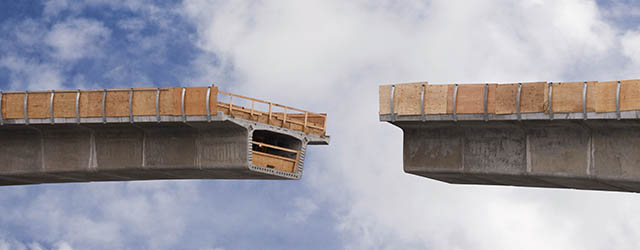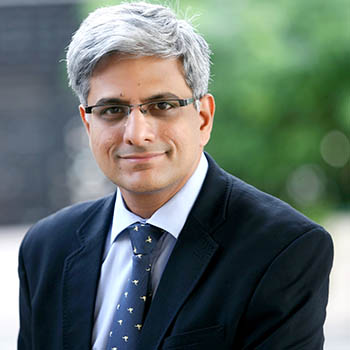Infrastructure Investment

As economic growth languishes and worries about the specter of deflation mount, much-needed infrastructure development and new sources of project financing could provide a panacea to global growth.
Economic recovery worldwide is uneven, despite the strong push by central banks in recent years to employ a number of unconventional measures to give their own economies—and ultimately the global economy—a kick-start. Developing and developed countries are on the hunt for the next driver of growth. Fiscal constraints continue to affect governments everywhere, making a significant increase in public spending unlikely. But the solution for leaders from Vietnam to Brazil is right under their noses: the crumbling, or nonexistent, ports, power plants and sewage systems on which their citizens, and economies, rely. Infrastructure could hold the key to unlock the global savings glut that endures in the face of near-zero interest rates—that is, if political will is found and a comprehensive vision for infrastructure investment involving the private sector is laid out.
“Infrastructure investment can fuel growth and reduce income disparities,” says Bernie Sheahan, global director for infrastructure and natural resources at the International Finance Corporation (IFC). “Analytical work shows that, on average, a 10% increase in the stock of infrastructure contributes to 1% growth in the long term.” Sheahan says that infrastructure has contributed about half of the recent acceleration in growth in sub-Saharan Africa. In China real income by 2007 was about 6% higher than it would have been had its inter-urban expressway network not been built. According to an estimate by consultants Wendell Cox and Jean Love, the US interstate highway system has returned more than $6 in productivity for each dollar it cost.
Infrastructure investment in the transport, energy, water, telecommunication and social sectors (schools, hospitals and prisons) presents advantages for governments, corporates and investors alike—particularly in the current economic climate. It is needed both in developing countries, where good infrastructure has yet to be built, and in developed nations, where it is screaming for a face-lift. Hence there are boundless opportunities for private companies, from engineering, procurement and construction (EPC) to real estate to financial services.
DUAL IMPACT

Additionally, infrastructure investment has both a direct and an indirect effect on growth, contributing to job creation in the short-term and, by smoothing out wrinkles in supply chains, to increased economic efficiency in the long run. And though it requires public funds, it doesn’t have to burden governments as much as social assistance programs—especially when done via public-private partnerships (PPPs). Finally, in today’s low-interest-rate environment, infrastructure projects can attract institutional investors. “They offer long-term, stable cash flow, and many of these sectors are regulated, so entry barriers are high,” says Stefano Gatti, associate professor in the department of finance at Bocconi University in Italy.
The overall numbers are staggering. According to the World Bank, low and middle-income countries alone should invest an additional $1 trillion to $1.5 trillion in infrastructure annually until 2020. “There is definitely a lot of demand in Latin America and the Caribbean,” says Olga Lucía de Narváez, lead investment officer at the Inter-American Investment Corporation. “The region should increase investment by at least 2% of GDP over the next several years, about $150 billion to $250 billion per year.” The Asia Development Bank estimates that, between 2010 and 2020, the Asia Pacific region will require nearly $8 trillion in infrastructure investment, while the African Development Bank says that sub-Saharan Africa requires $50 billion dollars a year more than it gets now. As for the developed world, the American Society for Civil Engineers calculates that the US should invest $3.6 trillion by 2020, while the European Commission puts infrastructure needs across the European Union at more than $2 trillion over the next five years.
Scenarios For Global Infrastructure Investment
|
|||
|---|---|---|---|
|
Total need |
$57 trillion |
$57 trillion |
$57 trillion |
|
Government spending |
3% of GDP |
2% of GDP |
3.5% of GDP |
|
Total gap |
$8.4 trillion |
$24.6 trillion |
Zero |
|
Annual gap |
$500 billion |
$1.5 trillion |
Zero |
| Sources: OECD; McKinsey & Co; Global Insight | |||
These figures can overwhelm public administrations. “The balance sheets of European governments are managed under the stability pact, so the room available for public spending is limited,” says Gatti. P.D Rwelamila, professor of project management at the University of South Africa, concurs: “There is an enormous demand for infrastructure across the African continent, but many countries are struggling with their budgets. That’s why PPPs are important.” Rwelamila cites, among others, the N4 toll road connecting South Africa and Mozambique. The road has been financed, built and managed by the private consortium Trans African Concessions in exchange for a 30-year concession and for debt guarantees by the governments.
There is an enormous demand for infrastructure across the African continent, but many countries are struggling with their budgets.
~ P.D. Rwelamila, University of South Africa.
This is only one of the many ways in which public-private partnerships can be structured. And though PPPs can be deployed as a source of financing, they are an even more important efficiency tool, bringing the discipline and ability to innovate that is typical of the private sector to public-sector investment. “In India the government, especially at the state level, is beginning to see that money needs to be spent on building an infrastructure project and that the role of a PPP is to do this in a more efficient and less costly manner,” says Manish Agarwal, leader for capital projects and infrastructure at PwC India. In the southern state of Karnataka, the government is experimenting with a hybrid annuity model for roads, whereby it provides the private partner with partial funding of the construction cost and then pays it an annuity to cover the rest and to manage the infrastructure over time, without transferring toll revenue risk.
PPPs are central to the European Fund for Strategic Investments, an effort by the European Commission to leverage €21 billion ($24 billion) of public money and guarantees into investments of €315 billion. In the US, president Barack Obama recently introduced the Build America Investment Initiative to get the private sector more involved with infrastructure. Countries like Australia, the Philippines, South Africa, the United Kingdom, Canada and Colombia—the latter of which is undertaking a $25 billion roads program and has set up a new PPP law—are all leading the way in their regions.

Australia, in particular, can count on clear guidelines and broad acceptance of infrastructure PPPs by the community. “The early focus was on motorway projects that could self-fund,” says Brendan Lyon, chief executive of Infrastructure Partnerships Australia. “As the market became increasingly sophisticated, we saw the PPP model being stretched further.” For the new Ravenhall Prison in Victoria, the winning PPP consortium must not only provide the physical infrastructure but also bring the reoffending rate of prisoners 12% below the state average. International organizations are also increasing their investment in infrastructure developments. In 2014 the World Bank Group introduced a Global Infrastructure Facility to deepen the collaboration among the various actors working on complex infrastructure PPPs. The Asian Development Bank established an Office of Public-Private Partnerships to provide advisory services on PPPs and is developing the Asia Pacific Project Preparatory Fund to assist countries pursuing PPP projects. “The biggest challenge we see is the implementation capacity of governments,” says Ryuichi Kaga, the head of OPPP. “So we help them in setting up PPP policies and provide hands-on advice on structuring individual transactions.”
COMPLEX STRUCTURES

Infrastructure investment remains a complex endeavor and, in emerging markets, private participation has been declining, today representing only around 15% of total finance. Among the hurdles, beyond finding the money, are: selecting worthwhile projects; predicting users’ demand, which is particularly difficult in the transport sector; setting up a framework of risk-sharing acceptable to public and private partners; and identifying revenue streams that can be sustainable both at the financial and political levels. “PPPs can be a solution—but not for everybody,” says Antonio Estache, an infrastructure expert at the European Centre for Advanced Research in Economics and Statistics of the Université Libre de Bruxelles in Belgium. “Market size matters, risk level matters, the ability to pay the private-sector partner matters, as well as political and regulatory capacity.”
Long-term commitment and a strategic vision by officials are a requirement because this is a politically sensitive area and a change of political winds can jeopardize projects. “Though we have the rule of law, the US is one of the more politically risky places to invest in infrastructure,” says Richard Little, a US-based infrastructure policy consultant. “Our elected officials quickly back off from a project if voters decide they don’t like it.” In 2011 the Republican governor of Florida, Rick Scott, rejected federal funds for $2.4 billion (authorized by a Democratic administration) to build a high-speed rail between the cities of Tampa and Orlando. A private developer is now carrying out a more limited version on its own. Above all, private involvement in public infrastructure needs “acredible pipeline of productive, bankable, investment-ready projects offering acceptable risk-adjusted returns,” says the IFC’s Sheahan. Once again, the US is an example of how not to do things. “We have been going about it one project at a time. California did the [$340 million] Long Beach Courthouse in California, which was great but completely stand-alone,” says Little. “Where is the sustained body of projects?”
Though challenges remain, infrastructure investment holds enormous promise across the world. Everybody has a stake in it, with workers needing jobs, citizens needing access, investors needing returns, multinational corporations needing to move their goods around faster and cheaper, and governments needing to foster economic growth without adding to their already high debt burdens.



